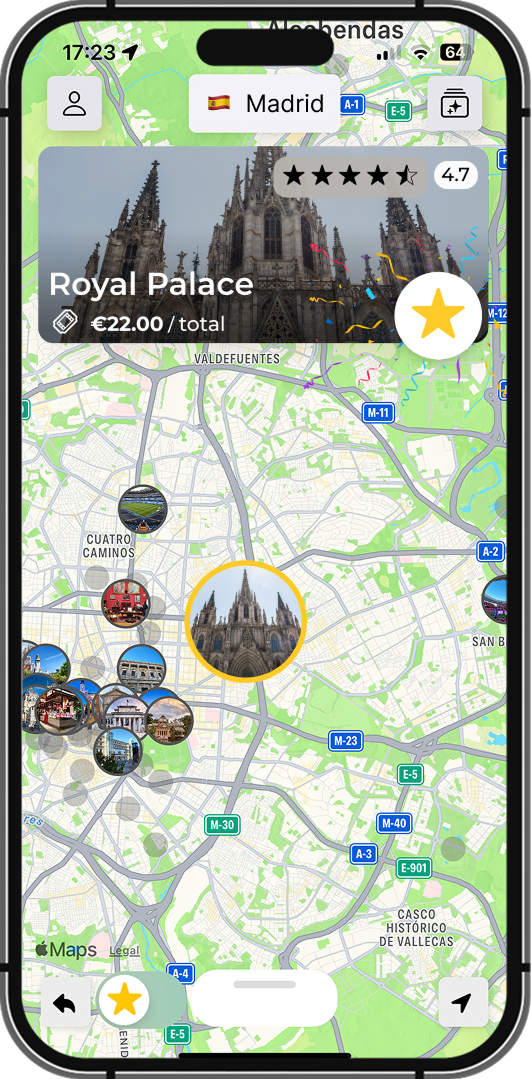
Quick Facts
Top Sights

Trevi Fountain
The Fontana Di Trevi, a Baroque masterpiece in Rome, is crafted from travertine stone. Completed in 1762, it features mythological figures like Neptune and Oceanus. Daily, €3,000 in coins are collected for charity. The fountain, fed by the ancient Aqua Virgo aqueduct, stands as a symbol of beauty and history.

Colosseum
The Colosseum, a monumental 3-tiered Roman amphitheater, became a World Heritage Site in 1980 and a New Seven Wonder in 2007. Visit with a guide to access restricted areas and skip long lines. Its travertine stone was used in notable Roman buildings and the Tiber River walls.


Pantheon
The Pantheon in Rome, a marvel of ancient Roman engineering, features a massive concrete dome and intricate artistry. Located in Piazza della Rotonda, it was converted to a Christian church in 609 AD, aiding its preservation. It remains an active worship site, attracting thousands of visitors daily.

St. Peter's Basilica
St. Peter's Basilica, built over 120 years, is a Renaissance marvel designed by architects like Michelangelo. It stands on Nero's Circus, where St. Peter was martyred. The basilica features a massive dome, intricate mosaics, and Michelangelo's Pietà, now protected by glass. It accommodates 60,000 people.

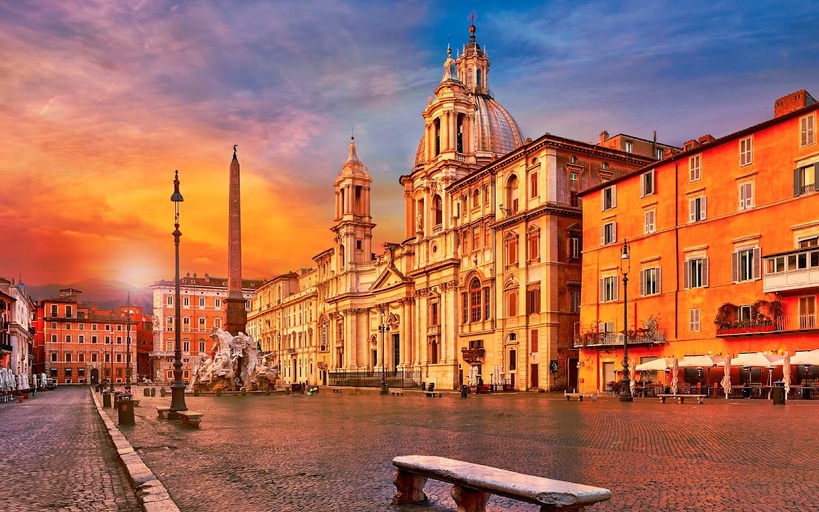
Piazza Navona
Piazza Navona, a Baroque masterpiece in Rome's Rione Parione, features Bernini's stunning Fountain of the Four Rivers, representing major world rivers. Originally a chariot stadium, it now hosts street artists and bars, with additional fountains like the Moor and Neptune adding to its charm.


The Knowledge of Locals
We search, vet and aggregate
every place you see on Happ

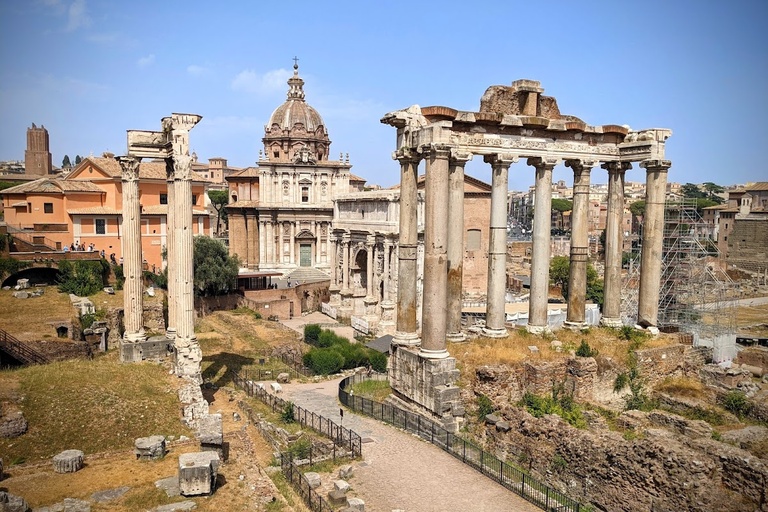
Roman Forum
The Roman Forum, once a vibrant hub of political, religious, and commercial life, features ruins of temples, monuments, and markets. Spanning from the Arch of Titus to Capitoline Hill, this grand city center reflects the heart of ancient Rome, with structures dating back 2,000 years.


Piazza di Spagna
The Spanish Steps, built in 1725, connect Piazza di Spagna to the Trinità dei Monti church. This Baroque masterpiece features 135 steps and the Fontana della Barcaccia by Pietro Bernini. Nearby, find an Egyptian obelisk and a museum dedicated to poet John Keats.
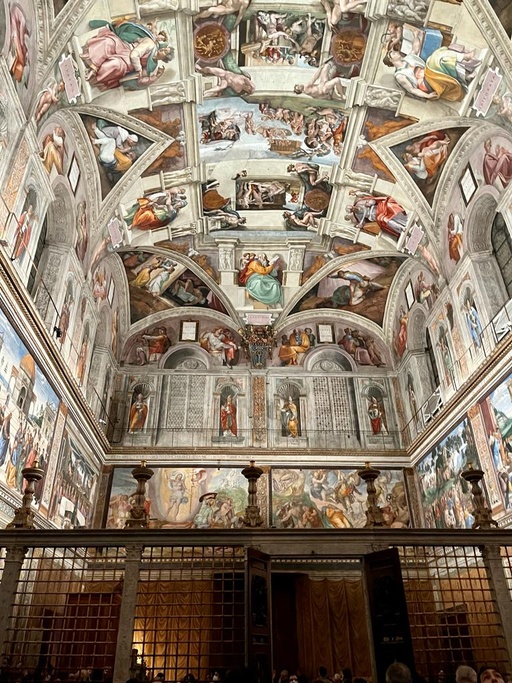
Vatican Museums
The Vatican Museums, with 54 galleries, house one of the world's largest art collections, including ancient Greek statues, Egyptian mummies, and Renaissance paintings. Highlights include the Laocoön sculpture, Raphael's frescoes, and the Sistine Chapel, showcasing art from classical to modern times.


Altar of the Fatherland
The Altar of the Fatherland, also known as the Wedding Cake, is a grand neoclassical monument in Rome dedicated to King Victor Emmanuel II. Built between 1885 and 1935, it symbolizes Italian unification. Its central feature is a striking equestrian statue, making it a must-visit on your Roman holiday.
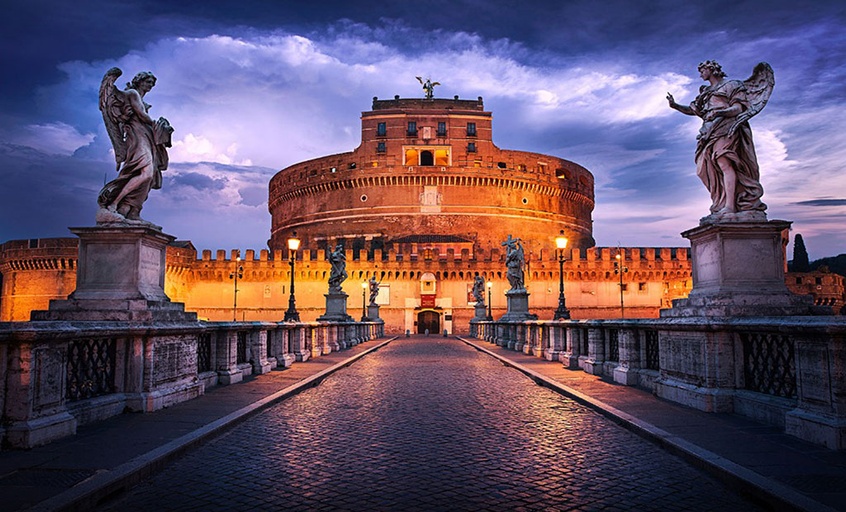
Castel Sant'Angelo
Castel Sant’Angelo, originally Emperor Hadrian's tomb, evolved into a Papal fortress and now a museum. Its rich history, unique architecture, and stunning views make it a must-visit in Rome. Accessible areas include the Chapel of the Condemned and the Armoury. The castle's name honors a legendary angelic apparition.


Real-Time Logistics
Change of plans? No problem.
Happ lets you travel confidently
while enjoying the moment.

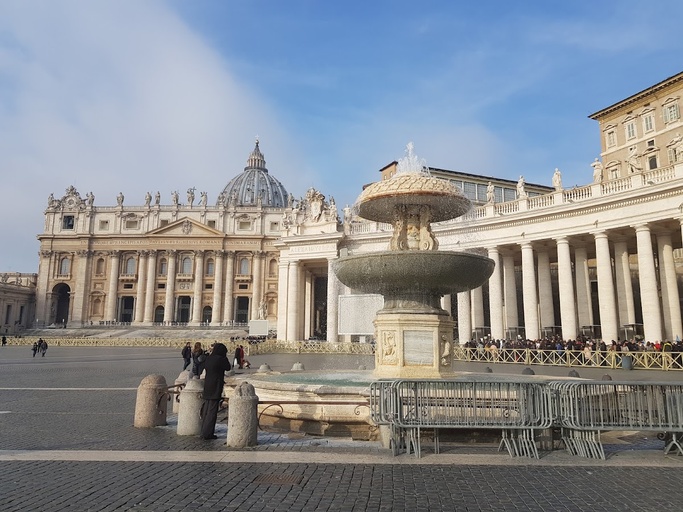
Saint Peter's Square
St. Peter's Square, designed by Bernini, features 284 columns and 140 saint sculptures. The 90-foot granite obelisk, originally from Nero's Circus, stands at its center. Built from 1656-1667 using Tivoli travertine, this iconic Vatican City site hosts crowds for the Pope's address.
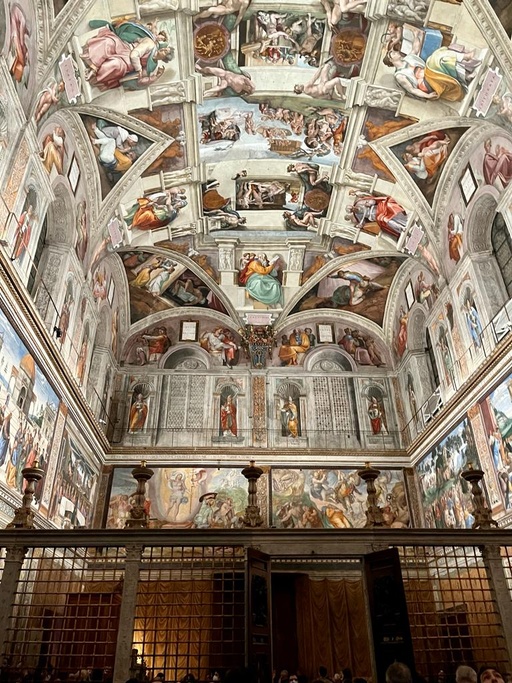
Sistine Chapel
The Sistine Chapel in Vatican City is renowned for Michelangelo's stunning 16th-century ceiling and The Last Judgement fresco. Visitors must remain silent, use earphones for tours, and refrain from photography. This iconic site is a must-see for art lovers, pilgrims, and curious tourists alike.

Neighbourhoods
Aventino-Testaccio
Known for its mix of ancient history and authentic Roman character, this area stands out for its peaceful green spaces and a strong sense of local tradition. It is especially popular for its food culture and a community atmosphere that feels distinct from the city’s more crowded quarters.
Colosseo
Known for its ancient ruins and monumental architecture, this area draws people interested in exploring the heart of Rome’s historical legacy. The neighbourhood is most popular for its archaeological sites and the sense of walking through layers of Roman history.
Esquilino-San Giovanni
Known for its multicultural atmosphere and historic architecture, this area is a crossroads of different cultures and traditions in Rome. It is popular for its diverse food markets, authentic international cuisine, and a mix of 19th-century buildings alongside ancient Roman sites.
Modern Centre
Known for its concentration of government buildings, shopping streets, and business centers, this area is where Rome’s modern life meets its historical roots. It is popular for its mix of contemporary architecture, cultural venues, and easy access to public transportation.
Nomentano
Known for its elegant early 20th-century architecture and tree-lined avenues, this area is popular for its academic institutions and a calm, residential atmosphere. It attracts those interested in a quieter side of Rome, with a strong local character and a mix of historic and modern influences.
North Centre
Known for its elegant streets and historic charm, this area is popular for its concentration of cultural landmarks, classic architecture, and a strong sense of local tradition. It attracts those interested in exploring Rome’s heritage and experiencing authentic city life.
Old Rome
Known for its narrow cobblestone streets and Renaissance-era buildings, this area is popular for its historic charm and authentic Roman atmosphere. It draws people who want to experience the heart of Rome’s ancient traditions, local shops, and classic trattorias.
Trastevere
Known for its narrow cobblestone streets and authentic Roman atmosphere, this area is popular for its traditional trattorias, street art, and a strong sense of local community. It stands out as a place where daily life and history blend, attracting those interested in experiencing a genuine side of Rome.
Vatican
Famous for being the spiritual and administrative center of the Catholic Church, this area draws people from around the world for its religious significance and unique status as an independent city-state within Rome. Known for its rich history, art, and architecture, it is a place where centuries-old traditions and cultural heritage are preserved and celebrated.
Walking Tours
City Tours
Self Guided Tours
Boat Tours
Bus Tours
Food Tours
Golf Cart Tours
Hop-On Hop-Off Tours
More Sights
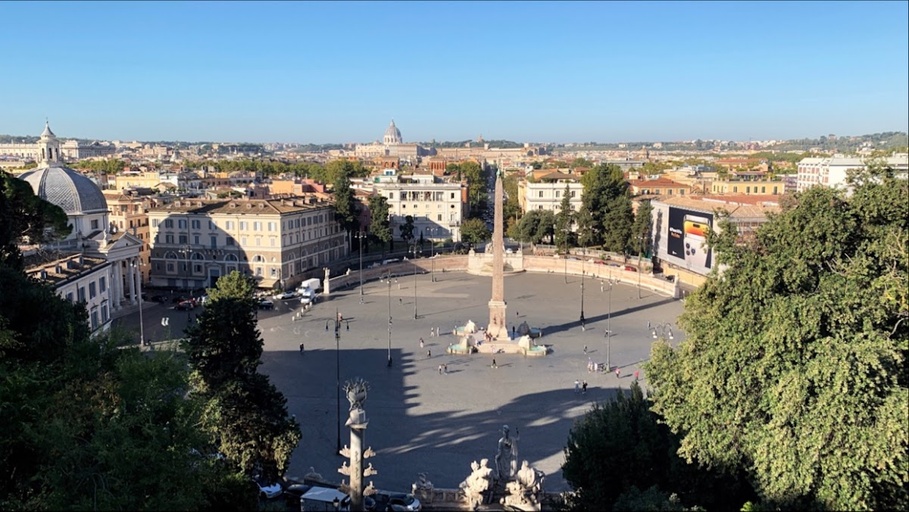
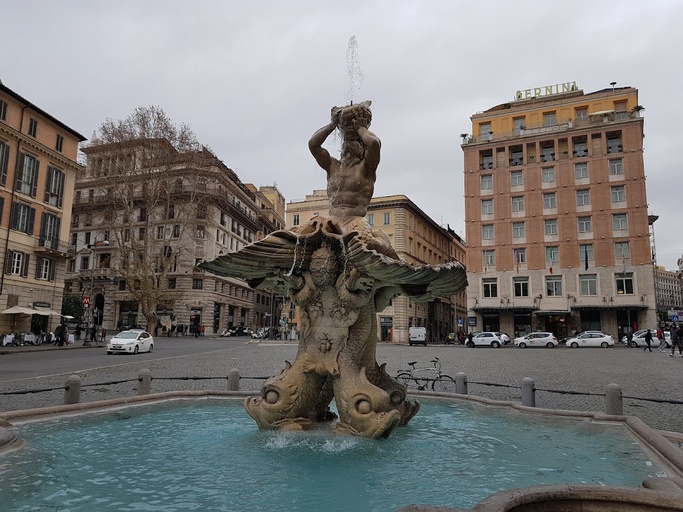
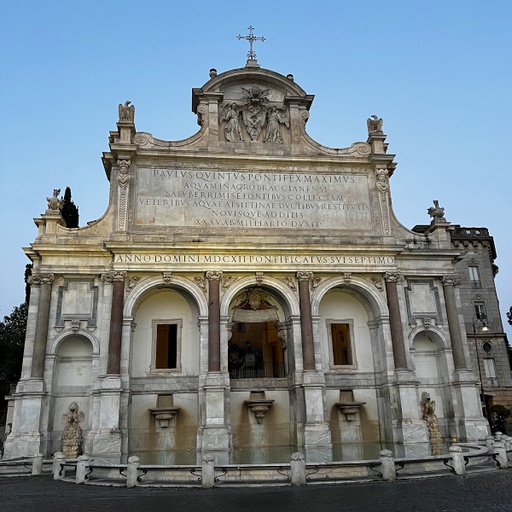
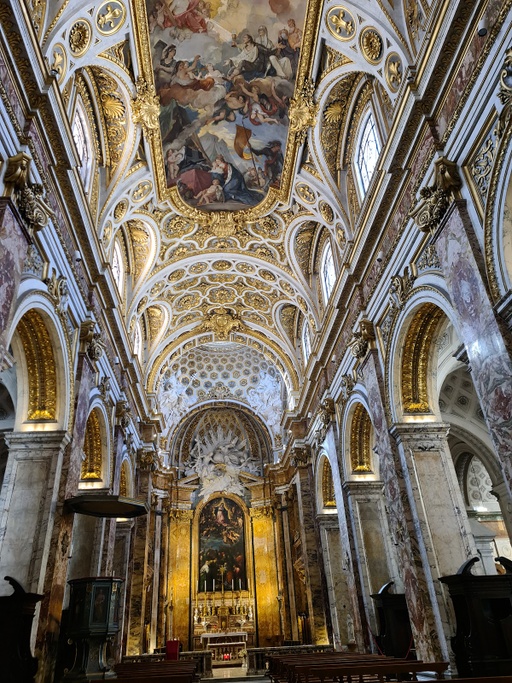
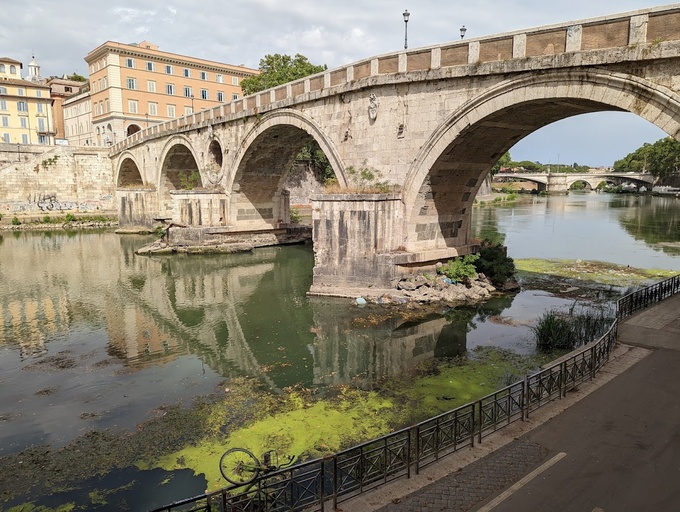
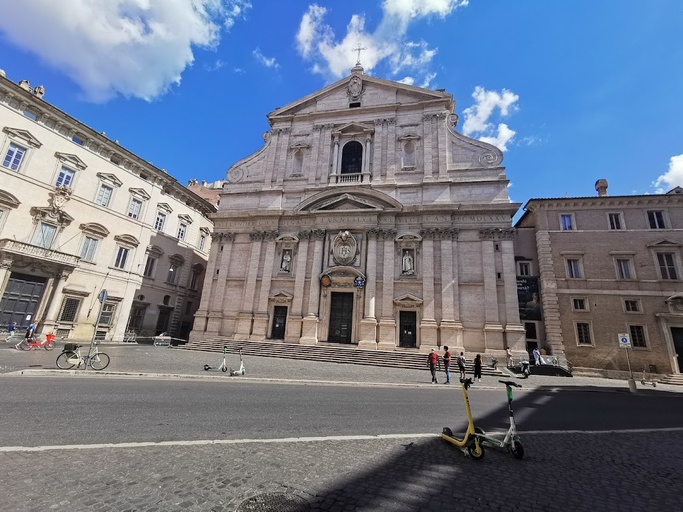


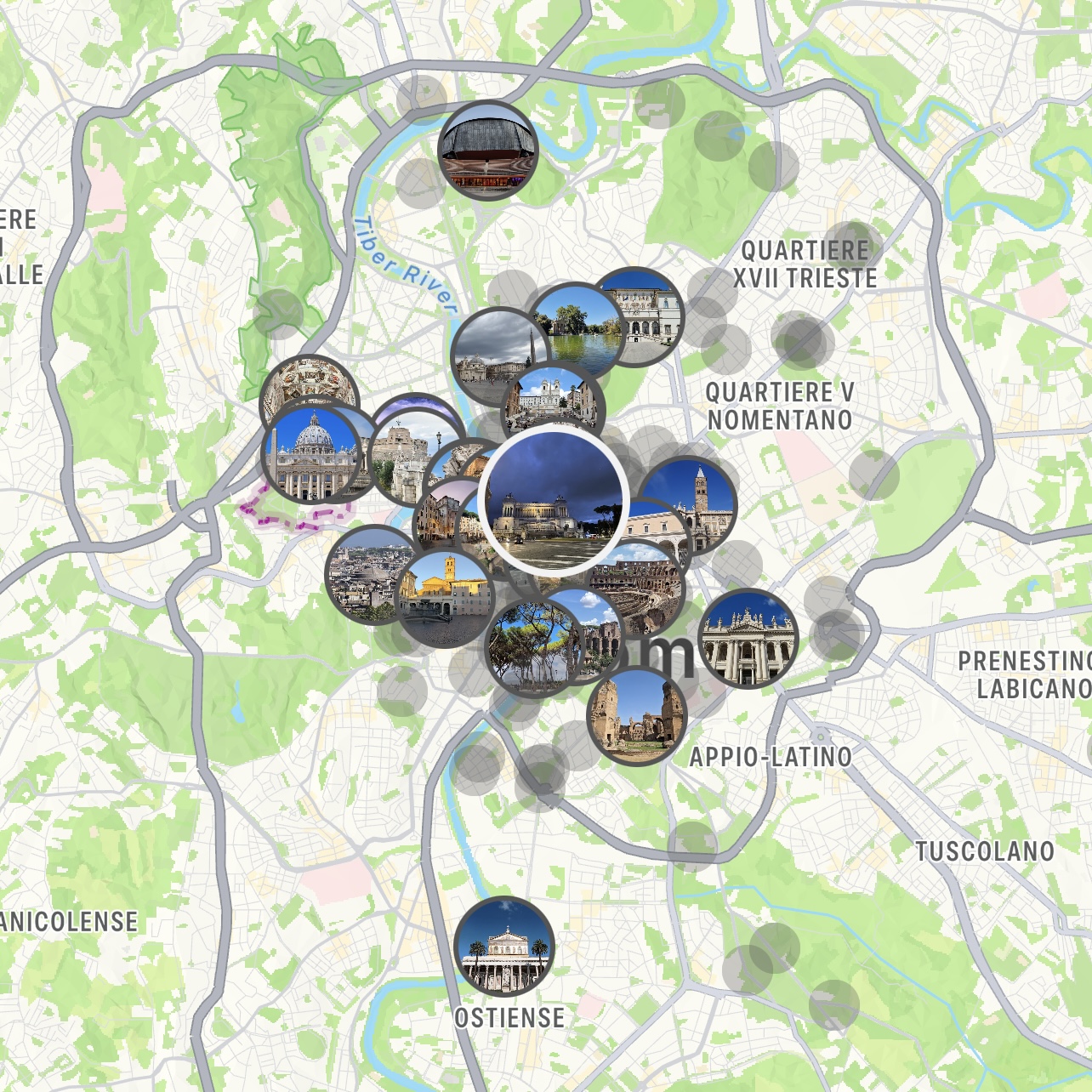

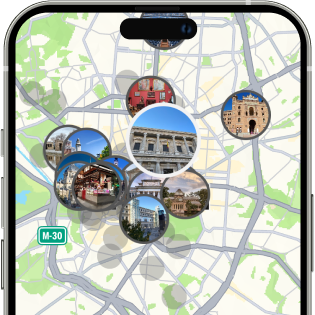
 *No app install needed
*No app install needed The traveller's pocket guide
The traveller's pocket guide